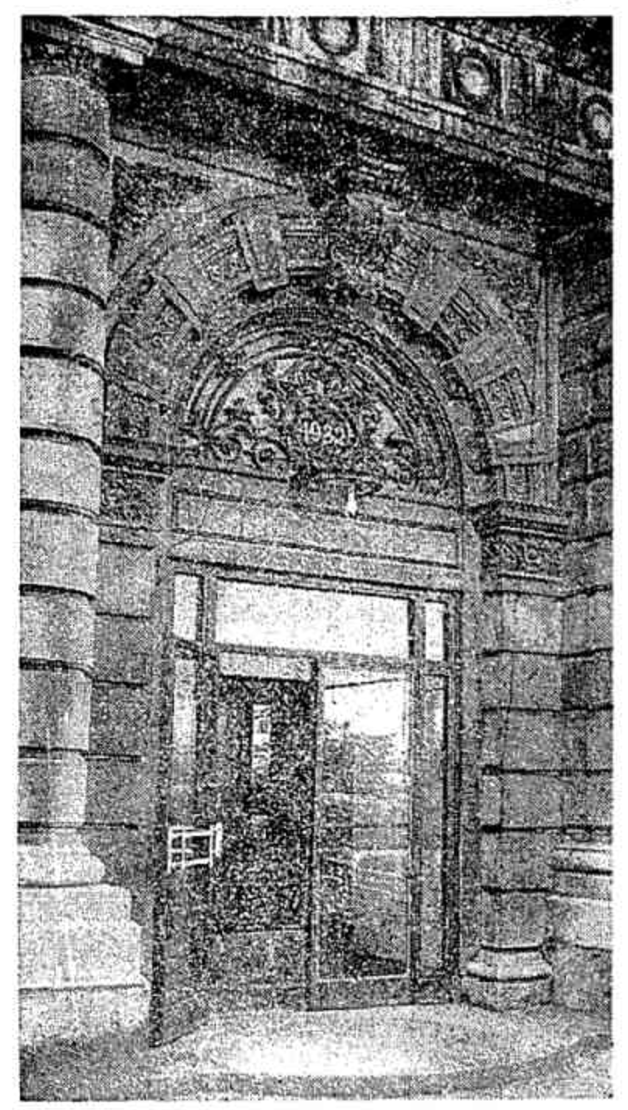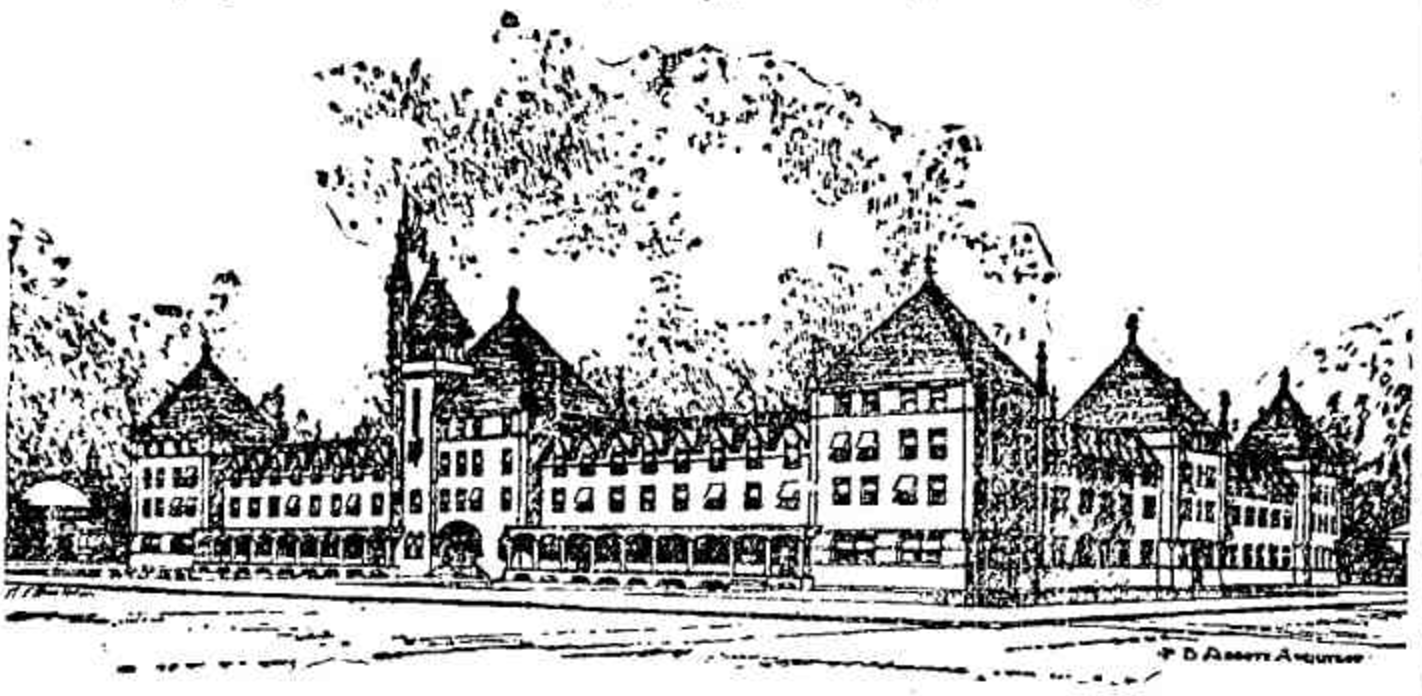The following are excerpts of articles from the Tribune that cover the city’s hotels during and after the 1893 World’s Fair. The news reflects changing opinions about living in hotels and how hotel buildings should be used, or not used, as public spaces.
Hotels were once considered respectable places to live as a home. They were the hub of their communities. As society began to emphasize the importance of single families living alone in homes and apartments, communal living fell into disfavor. Community leaders targeted multi-family buildings for removal, particularly hotels. Single-family home ownership is now viewed as the ideal, and hotel occupants are labeled transients.
November 1889: South Park Flats
Home items of interest to residents in the outskirts.
The opening of the social season marked by numerous pleasant events, including balls, receptions, amateur theatrics, and musical entertainments.
Hyde Park—There is talk of converting the new South Park flats into a hotel and adding two stories to the building…The G. T. Tennis Club has engaged Rosalie Hall at South Park for New Year’s eve. Extensive preparations are being made for holding a grand ball that evening.
March 1893: Great Eastern Hotel
A 1,100 room World’s Fair hotel nearing completion.
It is claimed that the Great Eastern Hotel, on the block bounded by Sixtieth and Sixty-first streets, St. Lawrence and Champlain avenues, has the largest number of rooms of any hotel in the world. It has 1,100 rooms, and work has so far advanced that insurance has been placed.
Although the building is but three stories high it was thought best to make it practically fireproof by covering it with staff and using mackolite for the partitions, each one of which thus becomes to some extent a firestop wall.
June 1893: Hotel Metropole
Two suicides were reported on the same day at the Metropole on June 3, 1893. Other suicides of this hotel’s residents would be reported throughout the summer during the financial crisis of 1893.
1. Board of Trade speculator committed suicide at his room by strangling himself with the silk cord of his smoking jacket. Two hours before he took his life he was at dinner with his wife in the hotel dining room…He seemed cheerful, and beforehand had gone to the barbershop and was shaved…
After dinner, [he] was a little morose. As he left the table [with his wife] he bid his friends “goodbye” in a sort of careless manner. [His wife] left her husband at 8 o’clock and went to the parlor below. He had some friends with him and finally left them, saying he would return, but he did not…
[Later] when his locked door was broken open [h]e was lying on the floor lifeless…On top of the bed was the smoking jacket itself carefully folded…[His] wife became hysterical when she saw what had happened and was taken away by friends.
2. [Businessman] committed suicide…by cutting his own throat with a razor…He and his family occupied one of the most elegant suites of rooms in the hotel in different periods for the last two years and were surrounded by every imaginable comfort….
The discovery was made a moment later by the head porter, who vainly attempted to stop the flow of blood. Excitement at the hotel was intense…[His wife] was prostrated by shock. [He] was popular among those living at the Metropole. When the news spread much sorrow was expressed.
April 1898: Great Eastern Hotel [After World’s Fair Ends]
Big hotel in ashes. Great Eastern structure burns like so much tinder. Is consumed in an hour.
Except for the owner and his family, the Great Eastern Hotel had been unoccupied for years and was given over to decay. [The owner carried no insurance.] Tramps from the neighborhood are supposed to have slept there and to them the fire is attributed by police. [The owner], however, said he thought some of his neighbors had fired the structure, as it was regarded by the residents as an eyesore…
The structure was of flimsy character. It was built entirely of wood and the partition walls were quickly consumed. In fifteen minutes the entire building was burning…The fire was a beautiful spectacle. The sky was tinted ruby with the reflection of the blazing pile and the entire neighborhood was lighted up…[Crowds of people] stopped to watch one of the greatest pyrotechnic displays the city has seen since the destruction of the World’s Fair buildings themselves…It was opened in late spring of 1893, but its remote location compared with other hotels and light attendance during the Fair proved disastrous and the building was closed. It never opened again to the public.
March 1937: Murder Castle
Henry Holmes, the World’s Fair serial killer, ran the World’s Fair Hotel from 1893 to 1894.

Record of H. H. Holmes’ sensational crimes.
Chicago had been Holmes’ stamping ground from 1888 to early 1894…Holmes had built a house.
O, what a queer house it was! In all America there was none like it. Its chimneys stuck out where chimneys should never stick out. Its stairways ended nowhere in particular. Winding passages brought the uninitiated with a frightful jerk back to where they had started from…This house of his—it was more a strange castle—he furnished well.
September 1970: Chicago Beach Hotel
Apartments to replace former Army building.
The now leveled [site]…was originally the Chicago Beach Hotel, a symbol of the Gay Nineties and the Roaring Twenties affluence since 1893, which barely survived the financial troubles of the Depression.
The building joined the war effort in 1942 when the United States Army established the Gardiner General Hospital there…During the war the hospital was in the news frequently as its combat-wounded patients made model airplanes, assembled small components for war machines, and set up their own radio station.
After 1946 it became just another office building, even though its executives wore military uniforms. The building stood vacant from 1963, when the Fifth Army Headquarters moved to Fort Sheridan, until early this year when it was demolished.
October 1972: Bryson Hotel

Two years ago, 250 elderly residents of Hyde Park’s Bryson Hotel were stuck with the fear that they would be removed from the hotel, because it had been cited for demolition by the Department of Urban Renewal.
Most of the tenants, whose average age was 70 and many of whom were semi-invalids, had lived in the Bryson for more than 20 years. They had grown attached to their home.
Forty of the residents, who refused to move, were finally given temporary residence in a nearby building. The other 210 residents received no assistance moving.
Did you like this article? Support local journalism by donating to South Side Weekly today.

